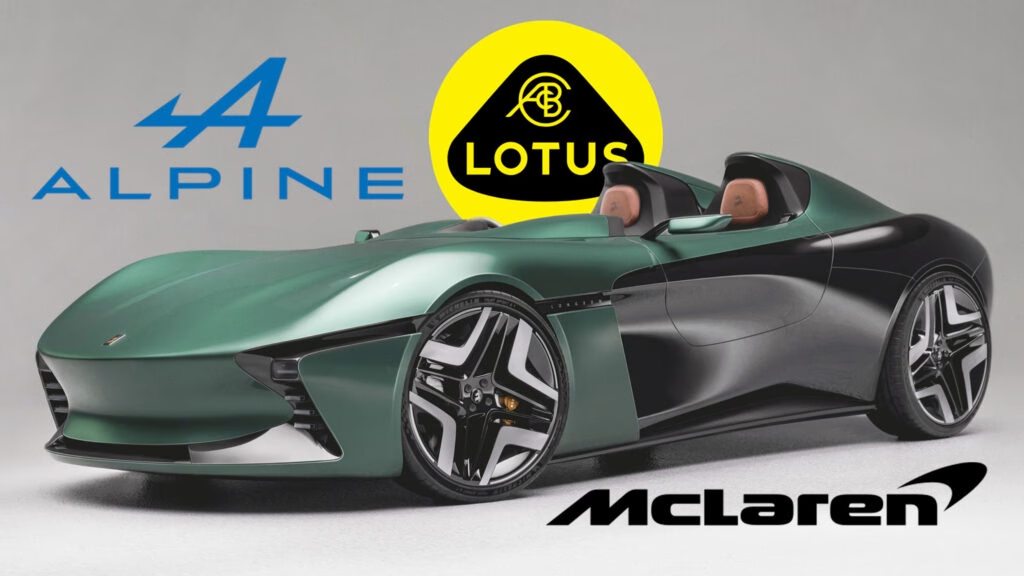Why Are Top Auto Industry Veterans Joining a British EV Startup?
When you see names like Mike Flewitt (former McLaren CEO), Michael van der Sande (ex-Alpine and Lucid Europe), and Dan Balmer (ex-Lotus Europe CEO) on a single advisory board, you know something interesting is brewing. These are not your average industry consultants—they’re heavy hitters with decades of experience building, marketing, and selling some of the world’s most exciting cars. So why are they now backing Longbow, a British electric sports car startup that most people haven’t even heard of yet?
The answer is simple: they see a gap in the market that the big players are missing. While Tesla’s long-promised Roadster remains a no-show, Longbow is moving quickly to fill that void, blending cutting-edge EV tech with the kind of lightweight, driver-focused engineering that’s become rare in today’s market. For these veterans, it’s a chance to shape the future of electric sports cars—without the corporate baggage.
What Makes Longbow’s Approach to Electric Sports Cars Different?
Let’s be honest: most modern EVs are heavy. Even the sportiest ones tip the scales at well over two tons, which can dull the driving experience. Longbow is taking a different route. Their first two models—the Speedster and the Roadster—are built on a proprietary aluminum EV platform, with obsessive attention to weight reduction. The Speedster, for example, is targeting a curb weight of just 1,973 pounds (895 kg). That’s lighter than a Mazda MX-5 Miata, and nearly half the weight of most electric rivals.
But it’s not just about the numbers. The Speedster is a two-seat, rear-wheel-drive machine with no windshield and a 0-60 mph sprint in 3.5 seconds. The Roadster, which follows, adds a removable roof and a bit more weight (220 lbs extra), but still clocks in lighter than a 15-year-old Lotus Elise. Both cars are unapologetically focused on driver engagement—something industry veterans like Flewitt say is missing from today’s EV landscape.
How Does Longbow Plan to Compete with Tesla’s Roadster?
Tesla’s Roadster has been a moving target for years. Announced with much fanfare, it’s still nowhere in sight, and its projected price tag has ballooned to around $250,000. Longbow’s answer? Launch a rival Roadster at a fraction of the price—just $84,000 if all goes to plan, with the Speedster starting at $110,000. That’s a bold move, especially for a startup, but it’s grounded in a clear strategy: offer a purist driving experience, world-class engineering, and a price that undercuts the competition.
Longbow’s team isn’t just banking on specs—they’re leveraging the credibility and networks of their new advisors. These are people who’ve launched and scaled performance brands before. Their involvement signals to investors and customers alike that Longbow isn’t just another vaporware startup.
Why Is Lightweight Design So Important for Electric Sports Cars?
Here’s the thing: batteries are heavy. Most automakers compensate by adding more power, but that’s a band-aid solution. True driving enthusiasts know that lightness is the secret sauce for agility, feedback, and fun. Longbow’s engineering team, led by co-founder Daniel Davey (ex-Lucid and Tesla), is obsessed with keeping weight down. Their aluminum platform is designed from the ground up for minimal mass, and every component is scrutinized for unnecessary heft.
This approach isn’t just about lap times. It’s about restoring the kind of tactile, connected driving experience that’s been lost as cars have gotten bigger and heavier. Flewitt himself put it best: these are the qualities that made sports cars special in the first place, and they’re increasingly rare in the EV era.
What’s the Real-World Potential for a Startup Like Longbow?
Skeptics might wonder if a small British startup can really take on the likes of Tesla, Porsche, or Lotus. But history is full of examples where nimble, focused teams have outmaneuvered giants. Think back to the original Lotus Elise or even the early days of Tesla itself. The key is to find a niche that the big guys are ignoring—and right now, that niche is lightweight, affordable electric sports cars.
Industry data backs this up. According to a 2023 report by BloombergNEF, the global EV market is expected to grow by over 20% annually through 2030, but the majority of new models are SUVs and crossovers. Sports cars remain a tiny slice of the pie, but one with fiercely loyal buyers. If Longbow can deliver on its promises, it could carve out a profitable corner of the market—especially as enthusiasts look for alternatives to ever-heavier mainstream EVs.
What’s Next for Longbow and the Future of Electric Sports Cars?
Production of the Speedster is slated to begin in the UK in 2027, with the Roadster following soon after. The company is still in the early stages, but with a dream team of advisors and a clear vision, they’re already attracting attention from investors and early adopters alike. And with Tesla’s Roadster still stuck in development limbo, Longbow has a real shot at being first to market with a truly engaging electric sports car.
The big takeaway? Reinventing the electric sports car isn’t about perfection—it’s about smarter adjustments. Start with one change this week, and you’ll likely spot the difference by month’s end.

